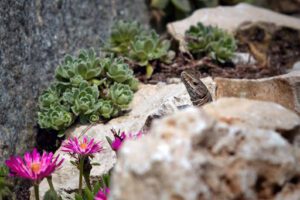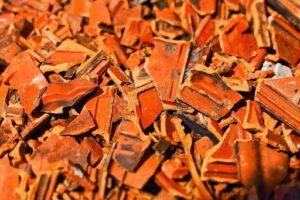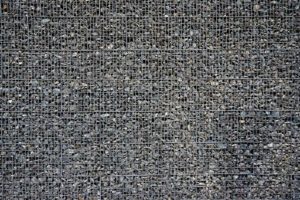Tips for Unique Gabion Wall Designs
Gabion walls are a two step process that offer terrific flexibility. Like any other wall, they need to be laid out before they can be built. Thanks to the metal cage material that makes up the primary structure of gabion walls, the structures can be surprisingly unique in your landscape.
Why Choose Gabions?
Affordability
Gabion walls are cheap to put together and surprisingly flexible. You can fill them with materials naturally found in your landscape and add unique features to catch the eye. Because the structural material is quite affordable and the majority of the fill can also be quite cost effective, your eye-catching features will be easily within budget.
Sustainable
Your gabion walls will naturally drain. If you've ever seen a concrete retaining wall fail, you understand how incredibly destructive standing water can be behind a concrete wall. Water weighs 8 pounds per gallon and will eventually erode away the base of a concrete retaining wall. If you live in a cold country, the risk of damage from the expansion of freezing water goes away with gabion retaining walls.
Aesthetically pleasing
Because a gabion wall can easily be changed with vining plants or altered with decorative inserts, they're quite striking. You can also create a beautifully uniform look by matching the material inside the gabion wall with the color of your home or the stones around your foundation.
Long lasting
Once your gabion wall is in place, it's not going anywhere. Vandals will have a tough time spray painting your gabion wall; if they do, their message will be garbled. Existing stones can be rotated to wipe out the damage done.
Even if the ground shifts under your gabion wall, your wall will flex. It is true that the base of your gabion wall will need to be dug into place, but the stones inside the mesh will shift or move slightly as the soil moves. Unlike a concrete wall, it won't crack.
Environmental mindfulness
You can fill your gabion mesh with readily available materials. You don't need to buy lumber that has been cut down, processed, shipped and stacked in a store, waiting for you to pick it out and build a fence with it.
With the right mesh, you can build your gabion wall with local gravel. Do make sure that your fence layout is exactly where you want it; moving your gabion wall will be extremely labor intensive.
You can also build your gabion walls with discarded items, such as aluminum cans. You can also use recycled debris from construction projects, such as broken bricks or concrete shards. The mesh structure that holds the material in place can last for fifty years, so it's a once-and-done project for many property owners.

Ideas for Different Materials for Gabion Walls
Shells
Because gabion walls can be layered with a base filler to keep costs low before you add something more visually appealing, your construction process will take careful management. For example, you may want to add shells as a visual element. Bulk shells can certainly be used to fill the whole gabion if you live in a spot where bulk shells are cost effective. Placing shells as a decorative feature in your gabion wall is also an option.
Driftwood
If your plans for your gabion wall include the addition of vines or flowering plants, driftwood can be a useful filler. Do be aware that any organic material may break down over time; you may need to add more driftwood to your mesh walls over time. The combination of bleached driftwood and shells could be a beautiful feature around your beach house.
Old wine bottles
Gabion walls are easy to curve, so filling them with curved glass and round bottoms from old bottles is quite appealing. The many different colors used in wine storage can also add to the uniqueness of your wine bottle wall. Whole specimens can also be used in gabion mesh, but if you have concerns about vandals, using broken bottles may be wiser in the end.
Rusty objects
Your gabion mesh will not rust; even the required bracing will not corrode. Adding items that will rust to the mix of fill can lead to a striking effect over time.
If you have access to metal that can be added to your gabion fill, other colors may also be possible. Copper oxidizes to green and silver to black, so if metal scrap can be included in your design, the results will be constantly changing and may provide you with a remarkably flexible design, year by year.
Glass stone fill
It may make sense to use seaglass stone fill for part of your gabion wall installation. If keeping costs down is crucial, this material may not be at the top of your list. However, your gabion construction project may include several different panels. You could even add a tray of sorts to the top of your gabion wall and load that with colored seaglass.
If your gabion fence is in a desert, you could add blue colored seaglass to create a river effect. If you're located in a high, dry area the addition of a green seaglass ribbon at the top of your wall may be the best choice.
Naturally occurring stone
For the most environmentally friendly gabion walls, local stone can be used to great effect. You can also create a variegated look by stacking regular stones in series. A base of sandstone with a yellow or tan result can be stacked against white marble chip. Gray granite can be layered against a varied gravel.
PVC pipes
Discarded plastic can be included in gabion wall construction for an extremely porous and lightweight gabion wall. In areas where heavy rains and drainage are of special concern, a wall made entirely of scrap PVC pipe may be of special use. Because these plastic pipes are available in a wide variety of colors, this wall could be used to striking effect on your property.
Clay
Clay remains and clay pipe shards can also be used in gabion wall builds. Make sure that your material investments are of sufficient volume; in very wet conditions, clay may slowly break down and leave gaps over time.

Straw
Straw bale construction has been used to great effect in dry areas that need buildings of thick walls to keep a space cool. Straw inside your gabion walls may, again, break down over time. If you live in an area with a great deal of rain, straw gabion walls may compost. You may also find that these walls are picked over by wildlife looking for nesting materials.
However, if a green wall is your goal, straw may be a terrific start for vines to cling to. You may even be able to grow vertical garden features against a straw bale gabion wall.
Old cans
Recycled materials make terrific fill for any gabion wall. If you plan to use recycled cans, you may need to start with a stone base to stabilize your walls, but metal cans that may break down or corrode over time can add remarkable visual interest.
Different Kinds of Gabion Wall Designs
Tall walls
Because you can fill your gabion metal frames with a variety of materials, you can actually create very tall walls. Logically, it makes sense to create a heavy base, then add frames to fill with lighter materials as you go up. It's also possible to add a shelf or ledge at certain points in the wall so you can create openings to see out of places for a more involved design.
Plant growing walls
Gabion walls are inherently porous and drain well. If you want to grow plants on top of or inside your gabion wall, you may need to nestle pots inside the material. Straw, as noted above, can provide a rooting base for vines. A wall of bougainvillea, allowed to grow up and vine across a gabion wall, could be incredibly beautiful.
Columns
Gabion columns also offer a great deal of visual variety. If you have a long driveway and want a privacy fence to create the feeling of a compound, gabion columns of stone could be spaced with timbers or even metal panels to increase your privacy. Pay careful attention to wind exposure to make sure the fence features between the columns will not be damaged over time.
Low, curved walls
The curving option available in gabion construction makes it possible to build a beautiful garden feature. You can turn the inside of the walls into vertical gardens, place pots on top of the walls, or add a solar lighting feature to the top of your walls.
Succulent beds
Desert dwellers may grow a wide variety of succulents to great effect. Because they drain so well, you can take your gabion wall and add a layer of heavy duty weed block to the top, keeping your soil in place and allowing succulents to grow atop, through and over your walls.
Lighting
The availability of solar or wire free lighting offers those with gabion walls a great deal of variety. Simple twinkle lights can be added to the inside of your walls so your yard is filled with a soft glow. You can add motion detector solar lights to your gabion columns to track the movement of wildlife or other visitors to your property.
Retention walls for growing plants
There are many plants that can grow quite tall with a bit of support. If you have a spot where you'd love to plant some bamboo, it can be supported against your gabion walls. Tall flowers that are sensitive to wind, such as calla lilies or even gladiolas, can thrive from the drainage allowed by your gabion walls.
Retaining walls
If you live in an area where the native soil is very poor, you may have brought in better dirt for your garden projects. You may also have a great source of compost! Put up gabion retaining walls around your garden so you can protect that wonderful soil from run-off. Build up perennials around the inside edges of your garden so the water can drain away without taking your hard-won soil.
Water features
Perhaps you're interested in creating a bird bath or even a fountain feature. Water can be sprayed against a stone gabion wall, collected, and re-sprayed with a pump. Placing bird bath bowls into the top of your gabion wall will allow you to celebrate local wildlife; any overflow of this water will harmlessly drain away.

Conclusion
If you love the look of a stone wall, you may have been shocked at the price you were quoted to have one installed. A gabion wall can give you the look of a stone wall for a fraction of that price. Even better, you can create a wall that is loaded with materials that might have otherwise gone into a landfill.
